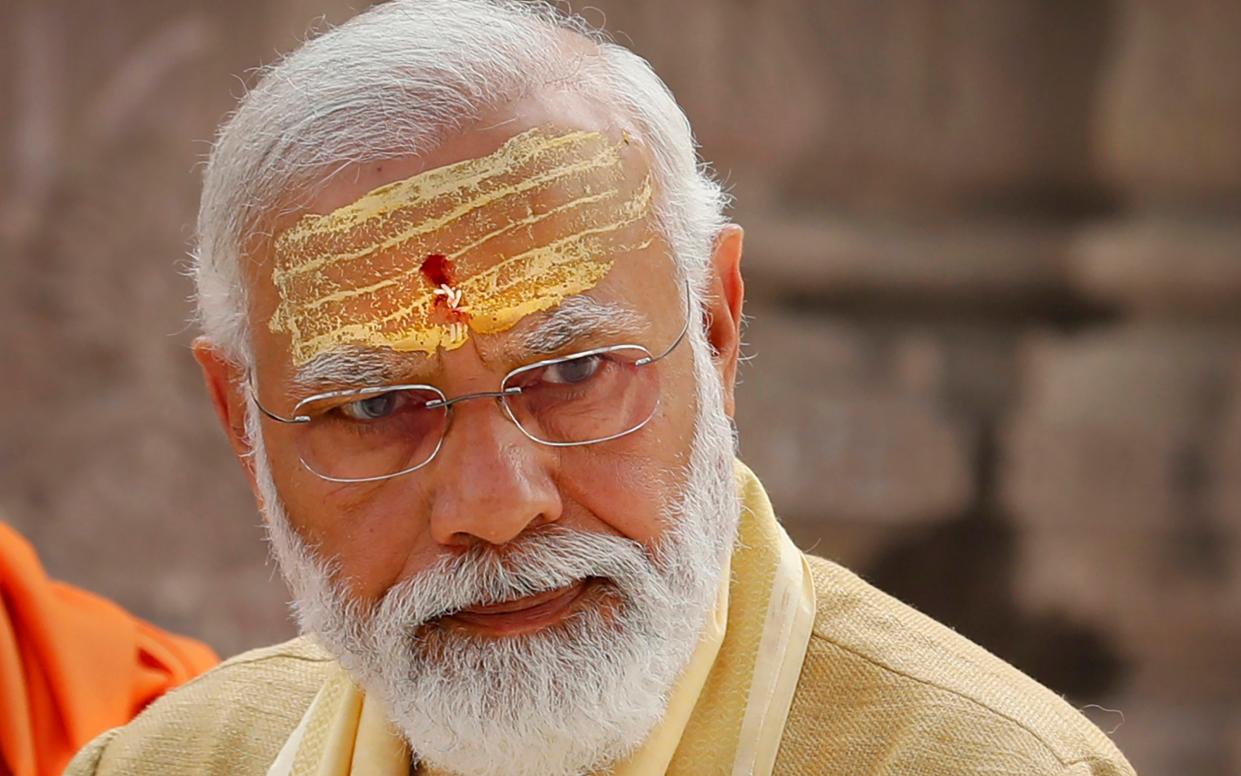Gandhi would have detested Narendra Modi – and all that he stands for

- Oops!Something went wrong.Please try again later.
- Oops!Something went wrong.Please try again later.
How absurd of India’s Prime Minister Narendra Modi to claim publicly that Mahatma Gandhi’s legacy was rediscovered by the Richard Attenborough biopic of the 1980s. The truth is far from being so simple.
Has Modi forgotten that Gandhi was assassinated by an activist of the very same paramilitary RSS (Rashtriya Swayamsevak Sangh), which remains tightly linked to Modi’s own ruling party, the BJP (Bharatiya Janata Party)? The Mahatma (“Great Soul”) was hated by Hindu chauvinists for his attempts to protect Muslims during the communal massacres of India’s Partition in 1947-48.
The Congress governments that ruled India for the next 30 years claimed him as their revered and martyred patron saint and erected innumerable memorials and monuments to him, ranging from statues to schools, hospitals and street names. He was never forgotten and had no need to be rescued by Attenborough.
True, Gandhi’s political philosophy mostly became the preserve of a non-party organisation led by Jayaprakash Narayan, “JP”, a hero of the nationalist movement. Gandhi had perfected the use of civil disobedience against the British Raj. JP used the same tactics to fight against the native authoritarianism of a Congress Prime Minister, Indira Gandhi, no relation of the Mahatma, during her notorious Emergency of 1975.
The JP Campaign, as it was known, united opposition and swept aside Indira in an election landslide in 1977. That ended the Emergency and spawned India’s first non-Congress government, formed by the newly constructed Janata or People’s Party, a broad church that included both former Congressmen and Hindu chauvinists. The latter soon split away to form Modi’s ruling Bhartiya (Indian) Janata Party. Mrs Gandhi took advantage of that split to make a successful comeback, and she presided over India and supported the filming of Attenborough’s Gandhi biopic in the 1980s.
All rather confusing to the uninitiated, but in India’s politics the wheel of fortune often turns in unexpected ways. The arrival in power of Hindu chauvinism with the BJP and Narendra Modi would hardly have been welcomed by the Mahatma, assassinated for his opposition to Hindu communal violence. It is extraordinary that his mantle is now being claimed by both the much diminished Congress he once led and its Hindu chauvinist Nemesis.
Might Modi have a point in the rather ambivalent nature of Gandhi’s own views on religion? As against the secularism of Indian liberals and socialists, both of whom were committed to keeping religion out of politics, Gandhi took a syncretic approach that advocated respect for all religions. Despite his attempts to protect Muslims in 1947, it was Gandhi, more than any other politician, who had brought Hindu mysticism, ritual and traditions into the Congress Party, symbolised by his own ascetic dress code and complex food fetishes. Few non-Hindus in India could easily identify with his doctrines of poverty and non-violence.
Gandhi’s religious ambivalence was reflected in India’s constitution, which enjoins equal respect for all religions and criminalises causing offence to any religious sentiments. And yet India’s first Prime Minister, Jawaharlal Nehru, was committed to a secularism far closer to Western socialist models, with Hinduism firmly kept out of the public sphere. He was very much an atheist, and his Will requested no religious observances at his funeral, a request ignored by his very Hindu-observant daughter and political heir, Indira Gandhi. This religious merry-go-round was completed when Indira, as Prime Minister, and now a very observant Hindu, made much-publicised temple visits and courted the Hindu vote, but also got the constitution amended to make India officially a “secular” republic.
So though ostensibly secular, India is currently run by Hindu nationalists who make no bones about their religious triumphalism. Their espousal of the Gandhi legacy is very much an attempt to wrong-foot the rival Congress Party, itself deeply divided over its own secular pretensions. Nothing is quite what it seems in the smoke and mirrors of Indian politics.

